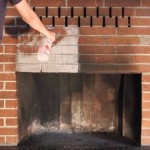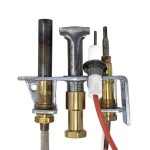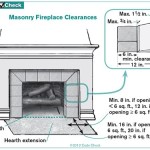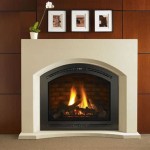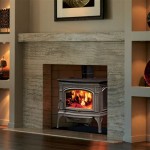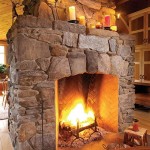Clean Out Your Fireplace: A Comprehensive Guide
Maintaining a fireplace involves more than just enjoying its warmth and ambiance. Regular cleaning is crucial for safety, efficiency, and longevity. Creosote buildup, ash accumulation, and debris can pose fire hazards and impede optimal fireplace performance. This article provides a comprehensive guide on how to properly clean a fireplace, covering essential tools, safety precautions, and step-by-step instructions.
The necessity of regular fireplace cleaning cannot be overstated. Creosote, a byproduct of incomplete combustion, accumulates inside the chimney flue. This substance is highly flammable, and even a small spark can ignite it, leading to a dangerous chimney fire. Additionally, accumulated ash can reduce airflow, making it harder to start and maintain a fire. Debris, such as leaves and twigs, can also obstruct the chimney, further hindering proper ventilation.
Essential Tools for Fireplace Cleaning
Before embarking on the cleaning process, it is imperative to gather the necessary tools. Having the right equipment will ensure a thorough and safe cleaning experience. The following is a list of essential tools:
Fireplace Shovel: A sturdy fireplace shovel is essential for scooping out ash and debris from the firebox. Choose a shovel made of durable metal that can withstand repeated use.
Ash Bucket: A metal ash bucket with a lid is crucial for safely containing and disposing of ashes. The lid prevents ashes from spreading and minimizes the risk of accidental fires. Ensure the bucket is made of a non-combustible material.
Fireplace Brush: A fireplace brush with stiff bristles is necessary for effectively scrubbing the firebox walls and removing soot and creosote buildup. Look for a brush with a long handle for reaching all areas of the firebox.
Chimney Brush: A chimney brush is vital for cleaning the chimney flue. It comes in various sizes and shapes to fit different chimney dimensions. Select the correct size brush to ensure a thorough cleaning of the entire flue. Consider a wire brush for masonry chimneys and a poly brush for metal chimney liners.
Chimney Sweep Rods: Chimney sweep rods are used in conjunction with the chimney brush to reach the entire length of the chimney flue. These rods are typically made of fiberglass or polypropylene and come in sections that can be connected to achieve the desired length.
Drop Cloth or Plastic Sheeting: To protect the surrounding area from soot and ash, it is essential to cover the hearth and nearby furniture with a drop cloth or plastic sheeting. This will significantly reduce cleanup time after the cleaning process.
Dust Mask or Respirator: A dust mask or respirator is crucial for protecting the respiratory system from inhaling ash and soot particles. This is especially important for individuals with respiratory sensitivities or allergies.
Safety Glasses: Safety glasses are necessary to protect the eyes from flying debris and ash particles. This will prevent eye irritation and potential injuries.
Gloves: Wear heavy-duty gloves to protect hands from dirt, grime, and potential injuries while handling tools and debris.
Vacuum Cleaner with HEPA Filter: A vacuum cleaner equipped with a HEPA filter is recommended for cleaning up fine ash particles that settle on surfaces. A regular vacuum cleaner can spread these particles, so a HEPA filter is essential for effective removal.
Safety Precautions Before Cleaning
Prioritizing safety is paramount when cleaning a fireplace. Following these precautions will minimize the risk of accidents and injuries:
Allow the Fireplace to Cool Completely: Wait at least 24-48 hours after the last fire to allow the fireplace to cool down completely. Embers can remain hot for an extended period, posing a significant burn risk.
Wear Protective Gear: Always wear a dust mask or respirator, safety glasses, and gloves to protect the respiratory system, eyes, and hands from ash, soot, and debris.
Protect the Surrounding Area: Cover the hearth and nearby furniture with a drop cloth or plastic sheeting to prevent soot and ash from spreading. This will simplify the cleanup process considerably.
Ensure Adequate Ventilation: Open windows and doors to provide adequate ventilation while cleaning. This will help to dissipate dust and fumes, improving air quality.
Remove Valuable or Fragile Items: Relocate any valuable or fragile items near the fireplace to prevent accidental damage during the cleaning process.
Inspect the Chimney Flue: Before cleaning, visually inspect the chimney flue for any signs of damage, such as cracks or missing bricks. If any damage is detected, consult a qualified chimney professional for repairs before proceeding.
Inform Others: Inform other household members that you will be cleaning the fireplace and that they should avoid the area until the process is complete.
Step-by-Step Cleaning Instructions
Once the safety precautions are addressed and the necessary tools are assembled, follow these step-by-step instructions for cleaning the fireplace:
1. Remove Ashes: Using the fireplace shovel, carefully scoop out the ashes from the firebox and deposit them into the metal ash bucket with a lid. Avoid overfilling the bucket to prevent spills. If the ash is still warm, wait for it to cool completely before handling it.
2. Clean the Firebox: Use the fireplace brush to scrub the firebox walls and remove soot and creosote buildup. Pay particular attention to areas with heavy accumulation. A scraper can be used for stubborn deposits. Vacuum the firebox with a HEPA filter vacuum to remove any remaining loose debris.
3. Clean the Hearth: Sweep or vacuum the hearth to remove any ash or soot that may have accumulated. Wipe down the hearth with a damp cloth to remove any remaining residue.
4. Clean the Chimney Flue: This step requires specialized tools and techniques. Begin by inspecting the chimney from the top. Attach the chimney brush to the chimney sweep rods and insert it into the flue. Push the brush up and down the flue, overlapping each stroke to ensure thorough cleaning. Add more rods as needed to reach the entire length of the chimney. For masonry chimneys, use a wire brush, and for metal chimney liners, use a poly brush. Exercise caution and avoid applying excessive force, which could damage the chimney liner. Remove the brush and rods, and carefully dispose of the dislodged creosote and debris.
5. Dispose of Ashes Properly: Once the ashes have cooled completely, dispose of them properly. Do not throw ashes into the trash can or compost pile, as they can still contain hot embers. The safest way to dispose of ashes is to seal them in a metal container and place them outside away from combustible materials. Check local regulations regarding ash disposal.
6. Clean the Tools: After the cleaning process is complete, thoroughly clean all tools with soap and water. Allow them to dry completely before storing them.
7. Inspect the Fireplace: After cleaning, thoroughly inspect the fireplace and chimney for any signs of damage or wear. Look for cracks, loose bricks, or damaged chimney liners. If any issues are detected, consult a qualified fireplace professional for repairs.
Regular fireplace cleaning is an essential aspect of home maintenance. By following these guidelines and taking the necessary precautions, one can maintain a safe and efficient fireplace, ensuring many years of warmth and enjoyment. If cleaning is not preferred, or if issues are detected, consult a professional chimney sweep for assistance.

Fireplace Ash Dump Service Full Chimney

Fireplace Cleanup And Wood Stove Chimneys Com

How To Do A Proper Chimney Clean Out

Installing A Clean Out Door And Cleaning Smoke Shelf

Best Way To Clean A Fireplace Stacy Risenmay

Fire Box Grate Ash Dump Doors Clean Out Dr Sweep

Fireplace Cleanout Door North Reading Ma Westford Sweepnman

How To Clean A Gas Fireplace 11 Steps With S Wikihow

Chimney 101 Base Assembly

The Ultimate Guide To Cleaning Your Gas Fireplace R T Services
Related Posts


